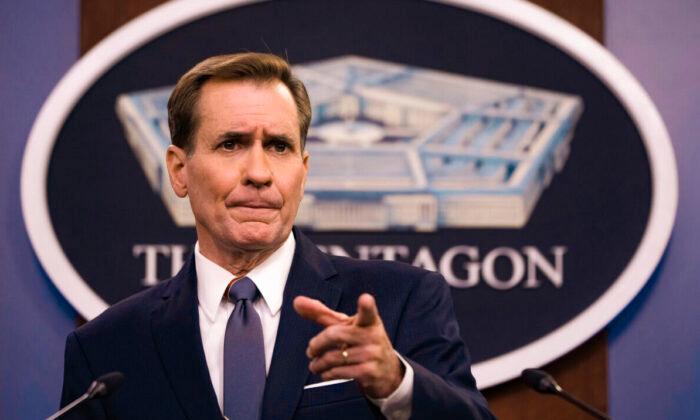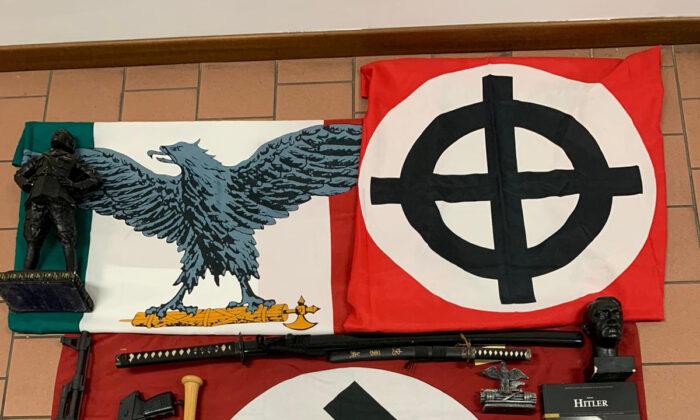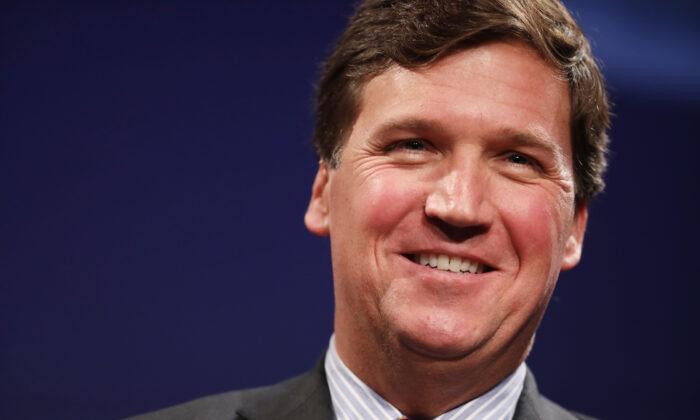The Pentagon’s new plan to counter extremism within its ranks includes prohibitions on liking and sharing social media content that “endorses extremist activities,” which critics worry will have a chilling effect on free speech.
The plan doesn’t introduce any new concepts, instead updating an anti-extremism policy that’s existed since 1969 to account for social media and other developments. Among the changes is an update to the definition of “active participation” in extremist activities to include “posting, liking, sharing, re-tweeting, or otherwise distributing content—when such content is taken with the intent to promote or otherwise endorse extremist activities.”
However, the DoD hasn’t clarified what exactly could constitute a violation of this rule. Pentagon press secretary John Kirby was tight-lipped about the matter when questioned by a reporter on whether it would be a violation for a soldier to “like” a post that says, “Joe Biden is not the president.”
“We could be here for hours going through whether liking all kinds of different hypothetical pieces of material, and I just don’t think that’s useful. The instruction’s very clear about what comprises extremist activity and what comprises active participation in it,” Kirby said at a Dec. 20 press conference.
“And we certainly have full confidence in our commanders’ ability when something’s reported to them to treat it appropriately and to—and to look into it in the manner that they see fit.”
The reporter pressed Kirby further about what happens if a soldier “accidentally likes” a post. Kirby again said it will be up to military leadership to ensure the policy is enforced responsibly.
“The physical act of liking is, of course, advocating, right? And advocating for extremist groups that advocate for violating the oath to the Constitution, the overthrow of the government, terrorist activities—liking is an advocation, and that’s laid out clear in the instruction,” Kirby said.
“But the other thing that’s laid out in the instruction is the responsibilities and the authorities of commanders here. And so, it’s very—it’s going to be very case-specific, and it will be up to a—the chain—an individual’s chain of command and his or her senior leadership in the unit to have that discussion, the determination whether this was a very deliberate act of active participation in extremist activities or whether it was maybe a mistake.”
Kirby added that the Pentagon won’t be actively monitoring social media for violations.
According to a military attorney familiar with the matter, the new policy won’t change much for servicemembers operating day to day.
“This is meant to show the White House that ‘we’re doing something,' because the White House cares about it,” said the attorney, who spoke under condition of anonymity. “This is all just meant to signal that this is a problem and we need a policy, but the actual commanders will probably look at this and go, ‘I’m not seeing this.’”
However, the policy could also have a chilling effect on speech because it signals to servicemembers that they could be punished for innocuous liking and sharing of posts. Given the conservative leanings of many military members, this could be the intended effect of the new policy, the attorney said.
Along with revealing its updates to the anti-extremism policy, the Pentagon announced on Dec. 20 the results of its review of extremist activity taking place within the military’s ranks. According to the DoD, members of the military who are subject to official action due to engagement in prohibited extremist activity are fewer than 100 over the past year.
At the Dec. 20 press conference, Kirby was again tight-lipped on details of the nearly 100 cases.
In response to a question about whether any of the cases were related to military members attending Black Lives Matter protests, the press secretary declined to say.
“I don’t have that breakdown of what their specific activities were. And again, these were individuals that were substantiated allegations of participating in extremist activity,” Kirby said. “I don’t have a breakdown of all 100 of them, what the specifics were.”




